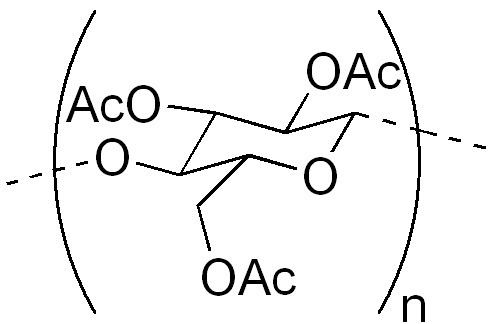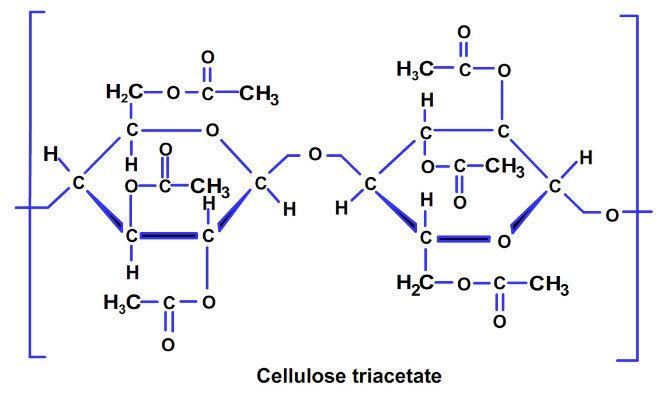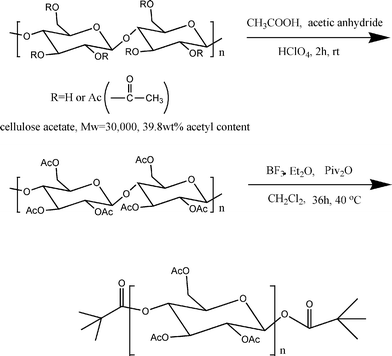 | ||
Cellulose triacetate
Cellulose triacetate, also known simply as triacetate, CTA and TAC, is a chemical compound manufactured from cellulose and a source of acetate esters, typically acetic anhydride. Triacetate is typically used for the creation of fibres and film base. It is similar chemically to cellulose acetate, with the distinguishing characteristics being that in triacetate, according to the Federal Trade Commission definition, at least "92 percent of the hydroxyl groups are acetylated." During the manufacture of triacetate the cellulose is completely acetylated whereas in regular cellulose acetate or cellulose diacetate, it is only partially acetylated. Triacetate is significantly more heat resistant than cellulose acetate.
Contents
- Cellulose triacetate
- History
- Production
- Chemistry
- As a Fibre
- Characteristics
- Usage Scenarios
- General Care Tips
- References

History

Triacetate, whose chemical equation is [C6H7O2(OOCCH3)3]n, was first produced commercially in the U.S. in 1954 by Celanese Corporation [1]. Mitsubishi Rayon Co., Ltd., is the only company that still produces the fiber. Eastman Kodak formerly manufactured cellulose triacetate. They discontinued this product on March 15, 2007. In 2010 Eastman Chemical announced a 70% increase in cellulose triacetate output at its Kingsport, TN manufacturing site in late 2010 to supply increasing demand for the chemical's use as an intermediate in the production of polarized films for liquid crystal displays (LCD)s.
Production

Triacetate is derived from cellulose by acetylating cellulose with acetic acid and/or acetic anhydride. Acetylation converts hydroxyl groups in cellulose to acetyl groups, which renders the cellulose polymer much more soluble in organic solvents. The cellulose acetate is dissolved in a mixture of dichloromethane and methanol for spinning. As the filaments emerge from a spinneret, the solvent is evaporated in warm air, in a process known as dry spinning, leaving a fibre of almost pure triacetate.

A finishing process called S-Finishing or surface saponification is sometimes applied to acetate and triacetate fabrics using a sodium hydroxide solution. This removes part or all of the acetyl groups from the surface of the fibres leaving them with a cellulose coating. This reduces the tendency for the fibres to acquire a static charge.
Chemistry
CAS number 9012-09-3
As a Fibre
Triacetate fibres have a crenate[2] cross section.
Characteristics
Usage Scenarios
Particularly effective in clothing where crease or pleat retention is important, such as skirts and dresses.
In the 1980s triacetate was also used with polyester to create shiny tracksuits which were very popular at the time. The material was very smooth and shiny on the outside and soft and fleecy on the inside.
